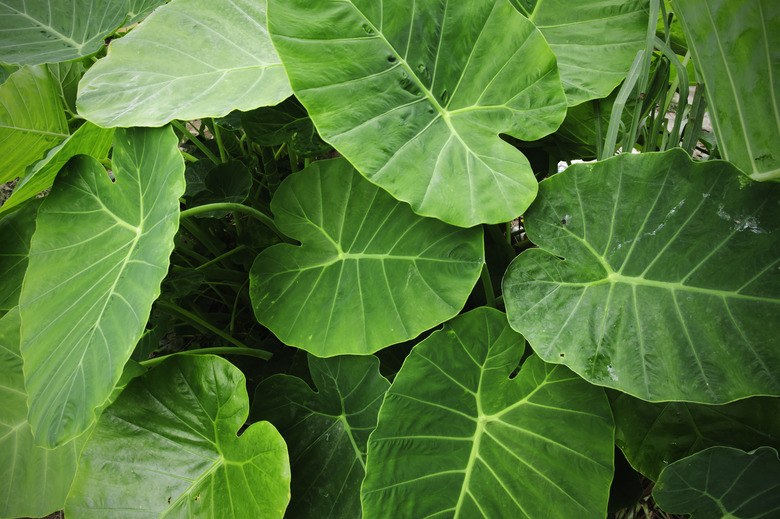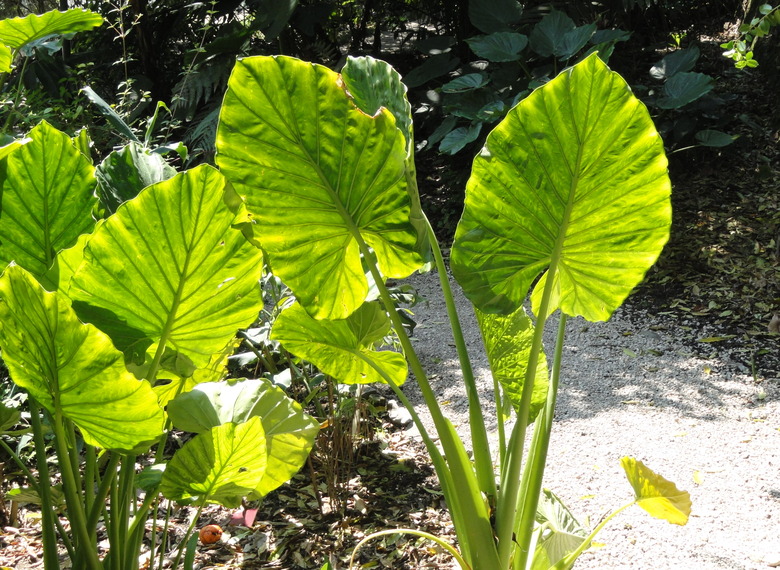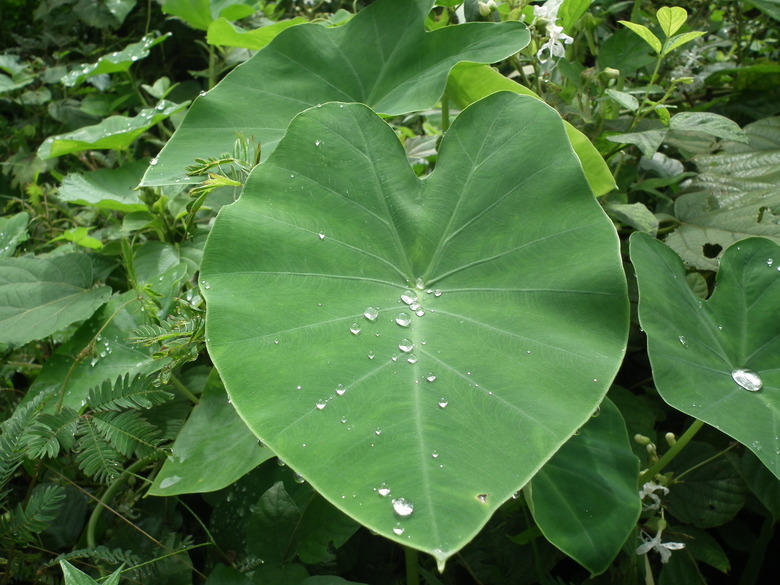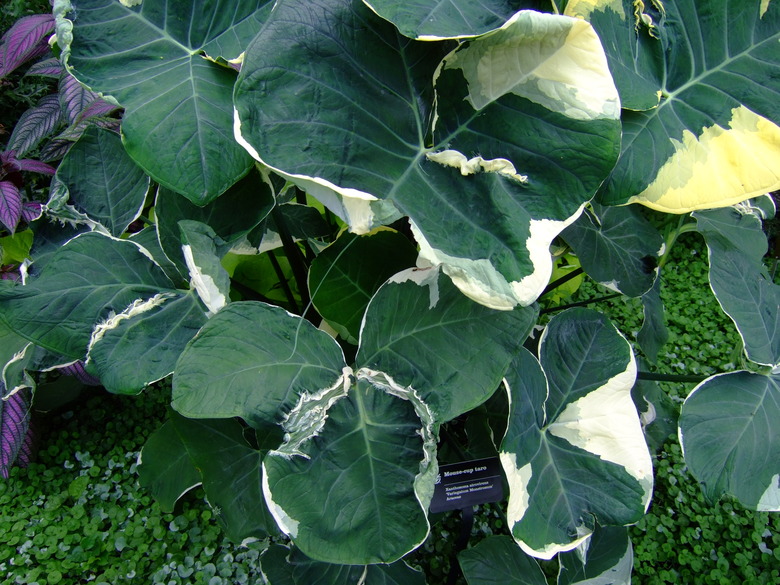How To Treat Elephant Ears Poisoning
With its giant heart-shaped leaves that can reach human size, elephant ear (Araceae) is a perennial tropical plant that originated in Asia and is a feast for the eyes. Thriving in USDA hardiness zones 9 through 11 when grown outdoors, the plant also survives in zones 3 to 8 when its corms, cormels or tubers (bulb-like structures) are planted in the spring to make it an annual.
Three genera are especially toxic to humans and animals, however. Alocasia, Colocasia and Xanthosoma are on the highly toxic list. Some plants that populate these three genera are edible because their roots are boiled to make different dishes, one of which is called poi. The operative word here is "boiled" as all consumable parts of elephant ears must be cooked before ingesting.
Tip
If accidental ingestion of an elephant ear part occurs, call Poison Control immediately.
Alocasia
The leaves of Alocasia spp. stand upright, one of the plant's most obvious identifying markings. Also known as giant taro and eaten by over 400 million people when boiled to make poi, Alocasia is grown in East Asia, Malaysia and other subtropical locales.
Its leaves can reach 12 feet tall, and a wide stem holds the plant upright. The giant size of the plant's leaves attracts human touch, but it takes only about 10 seconds for the leaf's poison and sap to transfer to internal organs.
If ingested, immediately wipe the skin and interior of the mouth. Wash out the mouth and spit. If possible, rush immediately to a medical center where you can be treated with intravenous fluids, ranitidine, antacids, local antiseptic and anesthetic mouth gel. Healing takes about three days, and all symptoms will disappear after one week, according to the International Journal of Scientific Study.
Colocasia
Colocasia is dangerous to humans and animals. Just touching the leaf can cause burns to the skin in sensitive people because of the presence of the chemical oxalic acid, a colorless substance that is highly caustic. Found in the leaves and stems of the elephant ear, the poison reaches beyond the mouth and lips and travels down into the throat and invades the gastrointestinal tract.
The most popular of the elephant ear plants, Colocasia differs from Alocasia elephant ears in that the Colocasia's leaves point downward. They also have a matte finish, unlike the shiny surface of other varieties. Colocasia is native to tropical southern Asia, Indonesia, Malaysia, New Guinea, parts of Australia and the Pacific Islands.
Like its Alocasia cousins, accidentally ingesting Colocasia may cause minor symptoms such as rash, vomiting or diarrhea. The severity of the poisoning depends on the individual's age and how much of the plant was ingested.
Immediately wipe out the person or animal's mouth. Make sure your patient can breathe because the airways may become constricted. Call 911 if this occurs.
Xanthosoma
There is an immediate physical difference between Alocasia and Colocasia elephant ears and plants in the Xanthosoma genus. Unlike the other two, Xanthosoma leaves are variegated and arrow-shaped. One of the only elephant ears grown easily in USDA hardiness zones 8 through 10, it's also the only variety from tropical America.
If ingested before it's cooked, wipe the mouth with a wet cloth. Do not induce vomiting, as the toxic chemical will affect the esophagus further. While the fatality rate for elephant ear poisoning is low, all varieties of the plant can cause severe harm to humans and animals.



